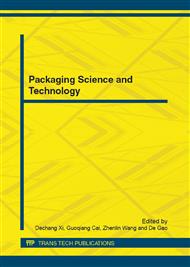[1]
C. R. Martin: Science, Vol. 266 (1994), p.1961.
Google Scholar
[2]
A. L. Prieto, M. M. Gonzalez, J. Keyani, R. Gronsky, T. Sands and A. M. Stancy: J. Am. Chem. Soc, Vol. 125 (2003), p.2388.
Google Scholar
[3]
D.W. Gong, Vamsi Yadavalli, Maggie Paulose, M. Pishko and C. A. Grimes: Biomed. Microdevices ,Vol. 5 (2003), p.75.
DOI: 10.1023/a:1024471618380
Google Scholar
[4]
M. Tian, J. Wang, J. S. Kurtz, T. E. Mallouk and M. H. W. Chan: Nano Lett, Vol. 3 (2003), p.919.
Google Scholar
[5]
P. A. M. Darder, M. Hernandez-Velez, E. Manova and E. Ruiz-Hitzky: Thin Solid Films, Vol. 495 (2005), p.321.
Google Scholar
[6]
G. Gorokh, A. Mozalev, D. Solovei, V. Khatko, E. Llobet and X. Correig: Electrochim. Acta, Vol. 52 (2006), p.1771.
DOI: 10.1016/j.electacta.2006.01.081
Google Scholar
[7]
R. C. Furneaux, W. R. Rigby and A. P. Davidson: Nature, Vol. 337 (1989), p.147.
Google Scholar
[8]
H. Asoh, K. Nishio, M. Nakao, T. Tamamura and H. Masuda: J. Electrochem. Soc, Vol.148 (2001) B, p.152.
Google Scholar
[9]
S. M. Li, S. Z. Zhou and J. H. Liu: Acta Physico-Chimica Sinica, Vol. 25 (2009), p.2581.
Google Scholar
[10]
S. Hoehne, R. Frenzel, C. Blank, M. Thieme, H. Worch, A. Heppe and F. Simon: Material-wissenschaft und Werkstofftechnik, Vol. 39 (2008), p.924.
DOI: 10.1002/mawe.200800403
Google Scholar
[11]
K. N. Li, X. Q. Yu, Q. H. Zhou, F. Chen and Z. Z. Gu: Nanoscience&Nanotechnology, Vol. 10(2008), p.43.
Google Scholar
[12]
G. K. Kannarpady, K. R. Khedir, H. Ishihara, J. Woo, O. D. Shin, S. Trigwell, C. Ryerson and A.S. Biris: ACS Applied Materials & Interfaces, Vol. 3(2011), p.2332.
DOI: 10.1021/am200251n
Google Scholar
[13]
D. H. Kim, Y. S. Kim, J. W. Kang, S.W. Hong, D. Lee , C. R. Cho, S. H. Kim, D.W. Lee and J. M. Kim: Journal of Micromechanics and Microengineering, Vol. 21(2011).
DOI: 10.1088/0960-1317/21/7/075024
Google Scholar
[14]
Z. F. Huang,L. Y. Sun,Y. T. Luo,Y. Liu,R. M. Wu and Z. Q. Yuan: Journal of Hunan University of Technology, Vol. 25(2011), p.5.
Google Scholar


